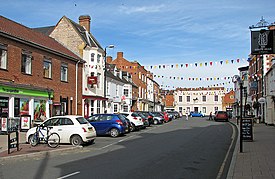Powerflushing nearby to Shipston-on-Stour

Powerflushing for Heating System Efficiency
Powerflushing is a vital service for the maintenance of heating systems in homes and commercial buildings. This process involves the removal of sludge, rust, and other debris from radiators and boilers, ensuring that the heating system operates efficiently. Over time, these contaminants can cause blockages and corrosion, leading to reduced heating efficiency and potential damage to the system. The power flush addresses these issues, restoring the system’s functionality and efficiency.
The benefits of powerflushing extend beyond just improved heating performance. It plays a significant role in reducing energy bills. A clean and efficient heating system requires less energy to heat a space, leading to lower energy consumption and costs. Additionally, the process can significantly reduce noise levels in heating systems, often caused by the presence of debris and blockages. This results in a quieter and more comfortable living or working environment.
To sum up, powerflushing is an indispensable procedure for anyone looking to maintain an efficient and effective heating system. It not only enhances the performance of the system but also contributes to energy savings and a quieter operation. Regular sessions, conducted by skilled professionals, are key to ensuring the longevity and efficiency of your heating system, making it a wise investment for any property owner.
Shipston-on-Stour is a town and civil parish in the Warwickshire district of Stratford-on-Avon. It is situated on the banks of the River Stour, approximately 9 miles (15 kilometres) south-southeast of Stratford-upon-Avon and 14 miles (22 kilometres) south of Warwick. Shipston-on-Stour had a population of 5,038 according to the 2011 census.
This area, near the borders of Oxfordshire and Gloucestershire, is known as the Vale of Red Horse.
Check this page for cleaning out rust in heating systems in these postcode areas:
- CV36
HISTORY
The sheep and wool trade are mentioned in the etymology.
Scepwaeisctune, Old English for Sheep-wash-Town, was the toponym in the 8th century. For centuries, it housed a sheep market. Scepwestun in the 11th century, Sipestone, Sepwestun, and Schipton in the 13th century, and Sepestonon-Sture in the 14th century were all variations on the name.
Administration of the church (vestry), formation of townships and parishes
It was a township in the parish of Tredington until 1720, when it was separated by a Local Act of George I’s 6th year. The town was prosperous and generous to its church community: Saint Edmund’s Church of England parish church has a 15th-century tower. G.E. Street, a Gothic Revival architect, designed the rest of the church in 1855. The tower had a five-bell ring until 1695, when they were recast and rehung as a six-bell ring. Since then, all of the bells have been recast and rehung at various times, most notably in 1754 and in 1979 by John Taylor & Co.
A stop for stagecoaches and a regional market.
Shipston is on the A3400 (formerly the A34) between Stratford-upon-Avon and Oxford; it was a staging point for stagecoaches from the 1600s to the 1800s. Former coaching inns, such as the Coach and Horses, can be found on the High Street, which contains many listed buildings.
A branch line from the horse-drawn Stratford and Moreton Tramway, which had been built ten years before to connect Moreton-in-Marsh with Stratford on Avon, began transporting agricultural produce and manufactured goods in 1836. The Great Western Railway upgraded the line in 1889 to allow steam trains to run from Moreton to Shipston. Passenger service to the town’s railway station was discontinued in 1929, and goods service was discontinued in 1960.
Early Victorian era
In 1837, the town’s first library and reading room were established. For many decades, the manufacture of shag fabric for deep-pile carpets was a significant industry, but by 1848, the town had little manufacturing or commerce despite having over 1800 residents. For centuries, Worcester Cathedral held the manorial rights and even held an annual court in the 1840s, at which a town constable was appointed. The powers of Shipston’s civil registration district were extended by the short-lived county debt court, which was established in 1847. (established 1837). The market was on Saturdays back then, with fairs in April, June, August, and October. Tidmington was annexed to the rectory, which received a net income of £700. Worcester Cathedral and Jesus College, Oxford were the patrons, with the former presenting (appointing the priest) to every third vacancy. In 1790, the church added extra seating in the form of a gallery. There were places of worship for Baptists, Friends, and Wesleyans, as well as a Roman Catholic chapel at Foxcote, which was part of the parish. A National School was endowed with approximately £130 per year, and “various small bequests” were distributed to the poor.
Rural district and poor law union
Shipston poor law union (c.1830–1894) administered those functions in 37 parishes or places: 20 in Warwickshire, 13 in Gloucestershire, and 4 in Worcestershire, with a population of 19,685 in the 1840s.
Shipston-on-Stour Rural District offices and Council meetings were held in Shipston from 1894 until 1974.
Exclave county
Shipston was a Worcestershire exclave (as part of the Oswaldslow hundred) until 1931, when it was transferred to Warwickshire.

